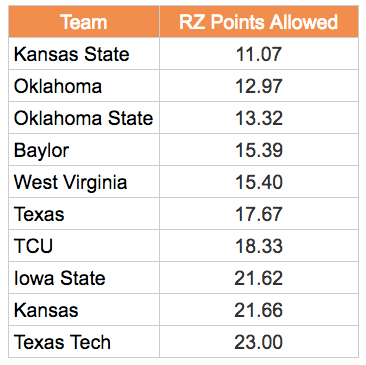Football
How Can You Quantify a ‘Bend, Don’t Break’ Defense?
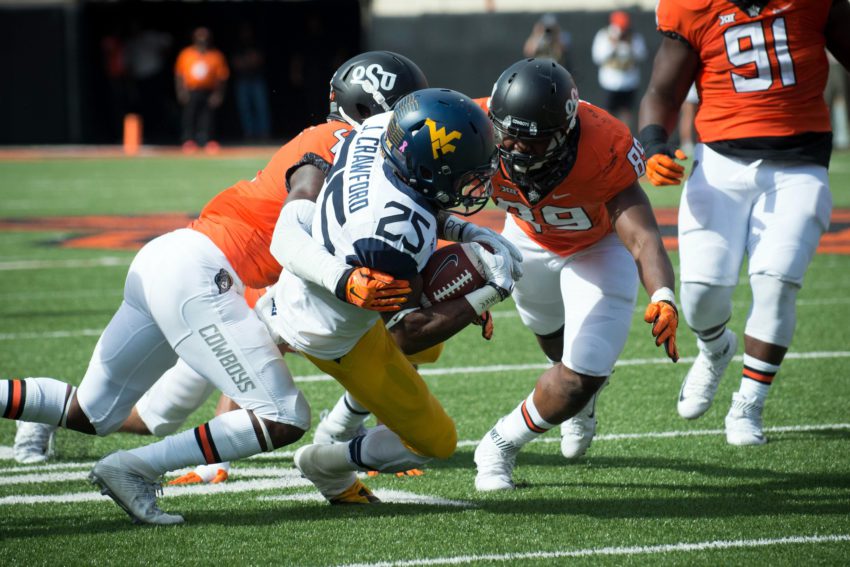
You’ve probably heard the term “bend, don’t break” when talking about defenses. It refers to a team that may give up some yards inside the 20-yard lines but can get stops when they need to.
Earlier we broke down the Big 12 teams by current PPR or “points per red-zone attempt”, a stat which I explain here that shows how effective an offense is at the most crucial part of the field.
We can use the same formula to quantify how good a defense is at not “breaking.” Here are the Big 12 defenses ranked in opponent PPR.
How good is each defense at holding an offense to three points (or zero) when backed up to their own end zone? Let’s take a look.
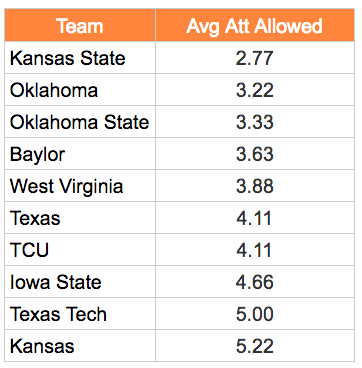
Just like an offense’s PPR can be coupled with the number of times they get to the red zone, opponent PPR can be better put in context when combined with how many red-zone trips a defense allows per game.
Here are those numbers.
So we see that West Virginia allows the least points per red-zone attempt (3.97), slightly edging out Oklahoma State (4.00). But the Mountaineers are fifth in allowed red-zone trips.
Oklahoma State looks pretty good here giving up just 4.00 points per red-zone trip and allowing only 3.33 trips per game.
Allowed zed-zone attempts is obviously impacted by the style of offense a team is playing and how well a defense is at slowing down that offense. More possessions mean more opportunities to get into the red zone.
If we combine the two stats we can separate the defenses by who has given up the least red-zone points per game.
Oklahoma State ranks third in points given up inside its own 20-yard line, just behind Kansas State and OU.
This does not account for big plays given up for scores that started outside of the 20-yard line, which OSU has had issues with this year (OSU is currently No. 104 in the nation in plays of 30+ yards given up).
This is the strategy of pretty much every Big 12 team. Other squads are going to get in your red zone. The question becomes what you do when that happens. Glenn Spencer preaches holding them to field goals.
“The double move about got us one time and they busted out on a bunch route when we were in man,” said Glenn Spencer of Kansas State last week. “Which kind of made me uneasy about playing more aggressive.”
“That being said, we still needed to force some field goals. If we’d have done that a couple more times, we’d have been in good shape. We gave up touchdowns after long drives, which is not what we like and we got shoved around a little bit.”
For as much grief as we have given Spencer this season, it appears that compared to other Big 12 defenses his group is fairly effective at keeping teams out of the red zone and limiting their effectiveness once in the red zone.

-

 Football3 days ago
Football3 days agoFour-Star Quarterback Adam Schobel Commits to Oklahoma State, Flips from Baylor
-
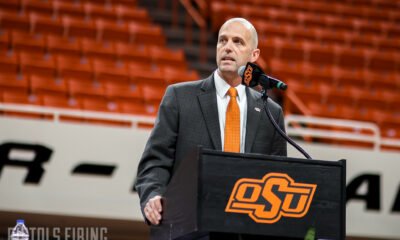
 Hoops3 days ago
Hoops3 days ago‘Keep Turning Over the Rocks’: Looking at the Portal Landscape as Lutz Looks to Solidify His First OSU Roster
-
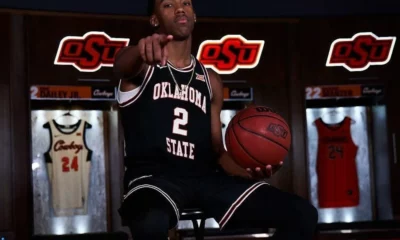
 Hoops3 days ago
Hoops3 days agoFour-Star Signee Jeremiah Johnson Reaffirms Commitment to Oklahoma State after Coaching Change
-
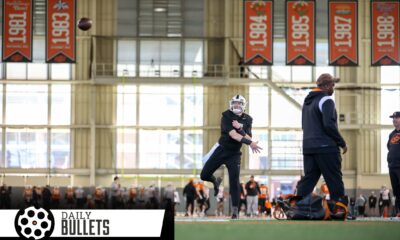
 Daily Bullets2 days ago
Daily Bullets2 days agoDaily Bullets (Apr. 23): Pokes Land Four-Star Quarterback, Retain Talent from Mike Boynton Era

